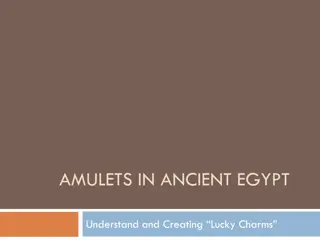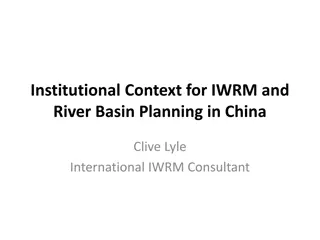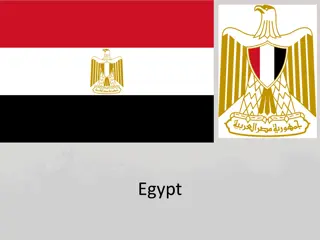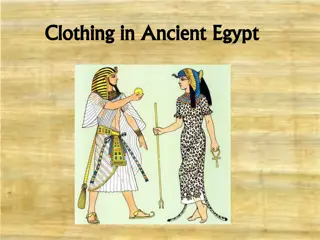The Importance of the Nile River in Ancient Egypt
The Nile River, flowing through countries like Egypt, Ethiopia, and Sudan, played a crucial role in the existence of Ancient Egypt. Providing vital moisture through floods, the Nile enabled agriculture, trade, and other essential activities along its banks. This article explores the significance of the Nile in sustaining one of the world's oldest civilizations.
Download Presentation

Please find below an Image/Link to download the presentation.
The content on the website is provided AS IS for your information and personal use only. It may not be sold, licensed, or shared on other websites without obtaining consent from the author.If you encounter any issues during the download, it is possible that the publisher has removed the file from their server.
You are allowed to download the files provided on this website for personal or commercial use, subject to the condition that they are used lawfully. All files are the property of their respective owners.
The content on the website is provided AS IS for your information and personal use only. It may not be sold, licensed, or shared on other websites without obtaining consent from the author.
E N D
Presentation Transcript
INTRODUCTION Continent Africa Countries it flows through Egypt, Ethiopia, Sudan, Burundi Length 6,695 kilometres (4,160 miles) Number of tributaries 2 Source Burundi, central Africa Mouth Egypt into the Mediterranean Sea
FACTS ABOUT THE NILE The Nile River is the longest river in the world. The Nile flows into the Mediterranean Sea. The Nile has a length of about 4,160 miles Its average discharge is 3.1 million litres per second. The Nile basin is huge and includes parts of Tanzania, Burundi, Rwanda, Congo & Kenya. The Nile receives its name from the Greek Neilos, which means a valley or river valley.
WHY IS IT SO IMPORTANT Ancient Egypt could not have existed without the river Nile. Since rainfall is almost non-existent in Egypt, the floods provided the only source of moisture to sustain crops. Every year, heavy summer rain in the Ethiopian highlands, sent a torrent of water that overflowed the banks of the Nile. When the floods went down it left thick rich mud which was excellent soil to plant seeds in after it had been ploughed. The ancient Egyptians could grow crops only in the mud left behind when the Nile flooded. So they all had fields all along the River Nile.
SEASONS Egyptian farmers divided their year into three seasons, based on the cycles of the Nile River: Akhet - the inundation (June-September): The Flooding Season. No farming was done at this time, as all the fields were flooded. Instead, many farmers worked for the pharaoh (king), building pyramids or temples. Some of the time was spent mending their tools and looking after animals. Peret (October-February): The Growing Season. In October the floodwaters receded, leaving behind a layer of rich, black soil. This fertile soil was then ploughed and seeded. Shemu (March-May): The Harvesting Season. The fully grown crops had to be cut down (harvested) and removed before the Nile flooded again. It was also the time to repair the canals ready for the next flood.
OTHER USES FOR THE NILE Reeds, called papyrus, grew along side the Nile. The Egyptians made paper and boats from the reeds. The Nile also gave the ancient Egyptians food. They used spears and nets to catch fish. They would also use the nets to catch birds that flew close to the surface of the water. Another way the Nile helped the ancient Egyptians was in trade. The Nile was the quickest and easiest way to travel from place to place.


![[PDF⚡READ❤ONLINE] Tutankhamun's Trumpet: Ancient Egypt in 100 Objects from the](/thumb/20549/pdf-read-online-tutankhamun-s-trumpet-ancient-egypt-in-100-objects-from-the.jpg)




















